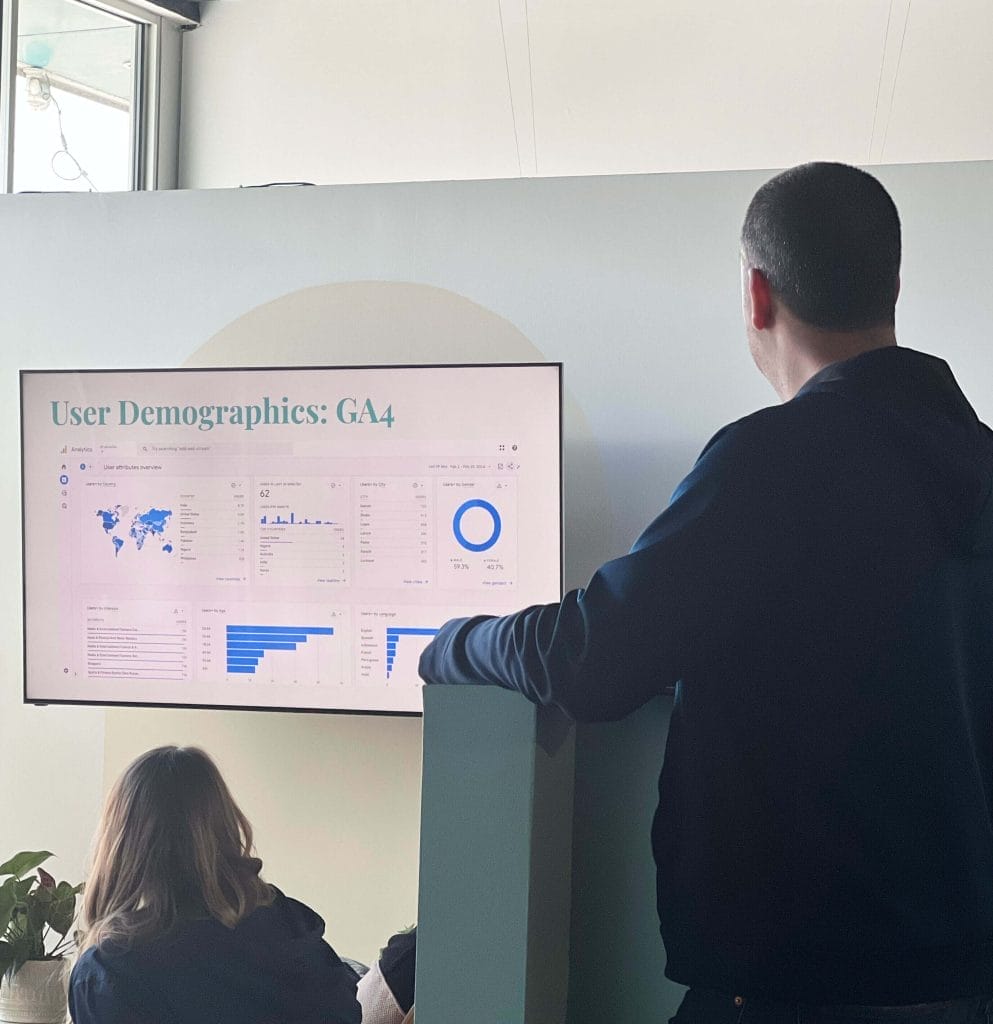Understanding the user journey has never been more crucial for businesses aiming to stand out In the digital age, where customer expectations constantly evolve. This journey maps out potential customers’ path from first becoming aware of your product to becoming loyal advocates. By diving deep into each stage of this journey and leveraging personas, businesses can tailor their strategies to meet and exceed customer expectations, increasing satisfaction, loyalty, and revenue. Here’s how to navigate each step effectively.
User Journey Demystified
On Wednesday, March 20th, we hosted some partners for a workshop about the user journey. It’s the complete experience a potential customer undergoes from first becoming aware of a brand or product through the stages of consideration and evaluation to the decision to purchase and ultimately to post-purchase retention and loyalty. It’s a holistic view that maps out a customer’s interactions and touchpoints with a brand across various channels and platforms.

Understanding the user journey allows businesses to identify opportunities to optimize each interaction, ensuring that every step is aligned with the customer’s scenario, needs, preferences, and expectations. This strategic insight enables companies to tailor their marketing, sales, and support efforts more effectively. It creates a seamless, engaging, satisfying experience that meets the customer’s immediate needs and fosters long-term loyalty and advocacy.
The role of personas
Before knowing your user journey, you need to understand your audience. Creating detailed personas — fictional representations of your ideal customers — is critical. They help you understand your audience’s diverse needs, preferences, and behavior patterns, allowing you to tailor each user journey stage accordingly. This targeted approach improves the effectiveness of your marketing strategies and enhances the overall customer experience.

User journey phases explained
Awareness: Capturing attention in a crowded market
The journey begins with awareness. In this digital era, your audience might find you through various channels — be it an insightful blog post, a social media story, or a recommendation from a friend. The key here is to make a memorable first impression. Use engaging, informative content that communicates your value proposition and addresses the problems your product solves. Remember, this is your chance to stand out in a crowded marketplace.
Evaluation: Making a compelling case
The evaluation stage is the decision-making crossroads. Customers compare your offering with competitors, assessing which best meets their needs. Here, clarity is your ally. Highlight your unique selling propositions (USPs) and differentiate your product with clear, compelling arguments. Incentives like free trials, demos, or discounts can tip the scales in your favor, making your product the obvious choice.
Consideration: Building trust & credibility
Once potential customers know your offering, they move into the consideration phase, looking more closely at your offer and how it compares to the competition. This stage is crucial for building trust and credibility. Provide detailed product descriptions, user testimonials, and case studies to showcase your product’s impact. A responsive customer service team can reinforce trust by promptly addressing queries and concerns.

Purchase: Streamlining the buying experience
Congratulations, your customer is ready to buy! However, a complicated purchase process can still deter them. Ensure a smooth, hassle-free transaction with a user-friendly website interface, secure payment options, and clear, concise instructions for product use. Post-purchase, a simple thank-you note or a customer satisfaction survey can enhance their experience, leaving a positive lasting impression.
Retention: Cultivating loyalty & advocacy
The journey doesn’t end with a purchase. Retention is where short-term success is converted into long-term loyalty. Excellent customer support, regular product updates, and personalized offers keep customers engaged and satisfied. Encourage feedback and actively listen to customer needs to continuously improve your product and service offerings. Happy customers don’t just return — they become advocates for your brand.
The value for companies
Companies unlock numerous benefits by deeply understanding and optimizing each stage of the user journey. Tailored marketing strategies become more effective, customer satisfaction increases, and retention rates soar. This focused attention on user needs and experiences fosters stronger customer relationships, leading to increased loyalty, advocacy, and, ultimately, higher revenues and sustainable growth.
Take time to understand your company’s user journey
Mastering the user journey is essential. By following these stages and employing personas, businesses can offer a personalized, effective user experience that attracts and retains customers. Remember, the journey is as important as the destination. Focusing on your customers’ needs and experiences at every step not only achieves immediate success but also secures long-term loyalty and advocacy.

We’d love to hear how you approach mapping out the user journey and any strategies you’ve found particularly effective. Share your thoughts and experiences on social! Also, if you are interested in knowing more, reach out to us.
